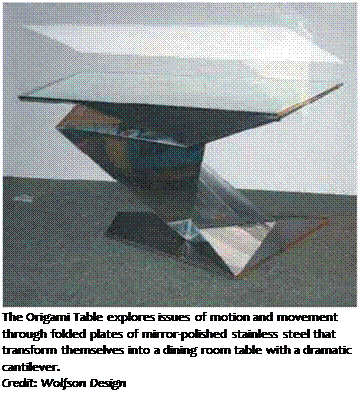 says Michael Wolfson of the genesis of his Origami Table. “Their studies of movement and motion are still going on today.”
says Michael Wolfson of the genesis of his Origami Table. “Their studies of movement and motion are still going on today.”
In addition to these influences, the seeds for what would become Wolfson’s Origami Table were planted a decade ago with a project that involved designing some chairs. But it wasn’t until a couple of years ago that he dusted off some old sketches and began to look at how to make his more formal studies viable. “In the last two years, when there began to be a stronger interest in art furniture,” he says, “this spurred me to go back and spend some time looking at furniture and see where it is in the culture.” According to Wolfson, “The more extreme forms of art furniture are not accessible or desired by the public, and that’s understandable. But you see that when extreme examples are produced, then they are eventually distilled down and accepted by the public, just like it is in the world of fashion.”
When Wolfson first began looking at how to turn his sketches into a real piece of furniture, he worked with a complete novice on preliminary modeling. “I was visiting my family in the United States and had a young nephew help me cut out pieces of paper,” he says. And then laughing adds, “But the study was so wonky that we just put is aside.” When Wolfson returned to his London office, he brought in the professionals. “A few people in the office and I had a jam session and started looking at what this could become. It started evolving in paper models and clay and every possible instrument. We really did start from this nonfunctional piece. It was a sketch of angles and forms and crystals, and we started to impose a function on it,” he recalls. “As the models began to develop, we realized it needed to have a certain scale so you could walk around it and see what it was and could be, because it looks different from every angle.” And this is how these sketched studies of motion and movement and angles and planes began to take shape as a table.
Once a full-scale model was made, they began to make computer renderings. Wolfson calls the computer “a wonderful tool,” before quickly adding, “But I don’t use it. I enjoy watching what can be done,” Wolfson says, “but I don’t think I’d design from a computer.” He says he “sits over someone’s shoulders” while they transfer his work to technical drawings, and is quick to give credit to the rest of the crew in his studio, including Chris Glaister, Maxim Nilov, and Cian Plumbe. For the initial prototype, they didn’t work with a structural engineer. “We started with just a feel for the material,” Wolfson reports.
|
108 DESIGN SECRETS: FURNITURE |
|
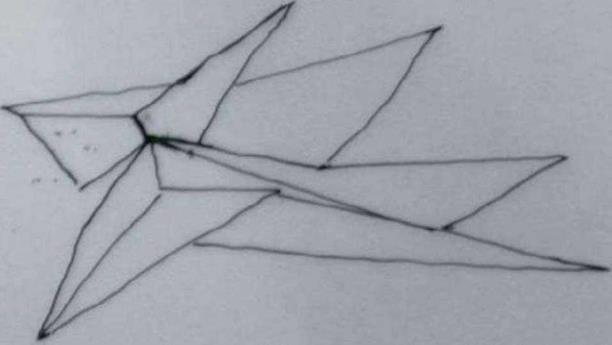
|
|
|
|
|

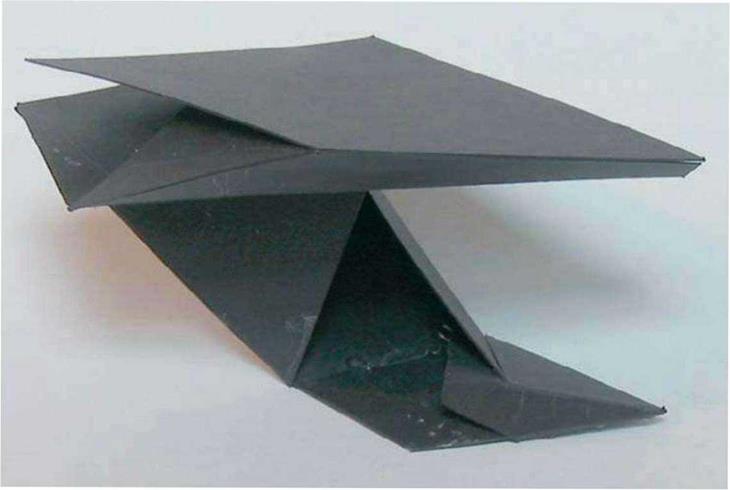

|
The material used is mirror-polished sheets of stainless steel. “There is a basic, unfolded diagram sent off to laser cutters,” Wolfson explains, “and it’s basically six or seven pieces that are cut off. There’s a whole diagram for the manufacturing of it. Certain lines are etched by the metal worker where it’s folded so you get the forms of these folded plates that are put together with laminating and glue.” Wolfson points out that there is very little welding, just a few screws, and that the piece does come apart. In addition to the mirror-polished plates, there are other pieces with an acid patina. “It creates a dark blue-brown effect,” Wolfson notes. “I hand apply it with sponges.” The base plate is made of mild steel, which is a standard, carbon steel. “The base plate receives the main body of the piece,” says Wolfson. “It’s kind of like a slipper that is screwed to keep it in place. We needed a big base to balance the strong cantilever of the table.” The piece is finished with a glass top and weighs several hundred pounds. Wolfson finds this fact an interesting irony, given that his intention was to explore issues of movement. However, as a large dining room table, Wolfson doesn’t see it moving around much in real life. He does envision it surrounded by other pieces of furniture that are simple and have clean lines. For example, he suggests, “Very pale leather chairs with slender legs. I would not exaggerate a piece like this,” he continues. “It’s so strong. It’s all mirrored and any light on it is magnified.”
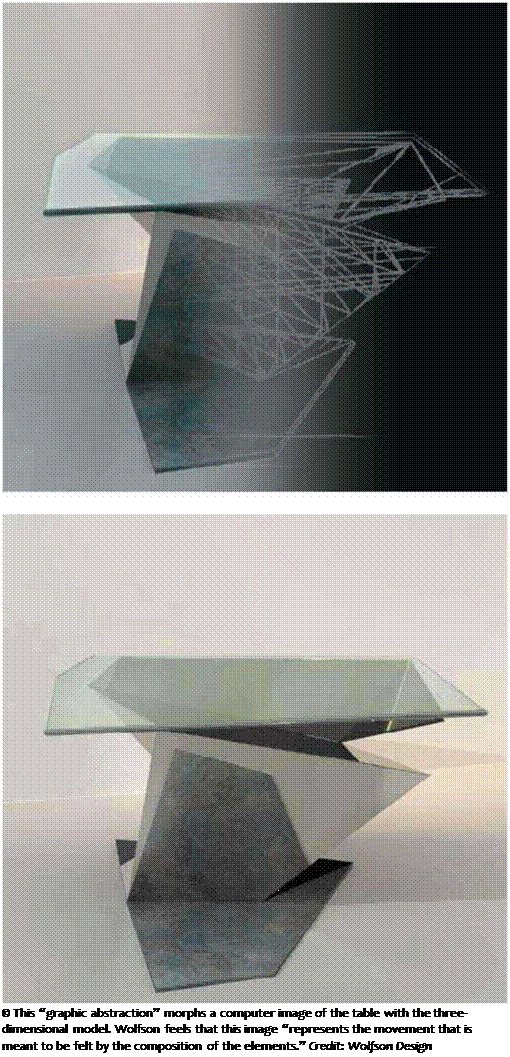
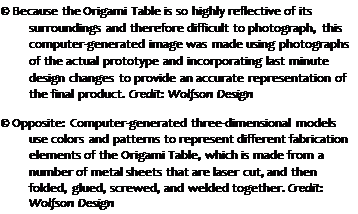 While the Origami Table is an art piece, and as such not likely to go into full-scale production, Wolfson is considering finessing his design to make it more practical. “We’re looking to make a variation that would be much lighter, made in a translucent material,” he says. In addition, “We’ve revised the design to allow for a little bit more structure. We’ve also decided to increase the thickness of the metal on the subsequent pieces. I’m going to drop it off with a structural engineer to have a look at it from a structural as well as production aspect to make it easier to put together,” he notes. And as much as he loves the aesthetics of the Origami, Wolfson says, “I don’t really like the impractical aspect of it. Ideally it would be a little bit lighter. I don’t like the idea of having things trucked into a gallery.”
While the Origami Table is an art piece, and as such not likely to go into full-scale production, Wolfson is considering finessing his design to make it more practical. “We’re looking to make a variation that would be much lighter, made in a translucent material,” he says. In addition, “We’ve revised the design to allow for a little bit more structure. We’ve also decided to increase the thickness of the metal on the subsequent pieces. I’m going to drop it off with a structural engineer to have a look at it from a structural as well as production aspect to make it easier to put together,” he notes. And as much as he loves the aesthetics of the Origami, Wolfson says, “I don’t really like the impractical aspect of it. Ideally it would be a little bit lighter. I don’t like the idea of having things trucked into a gallery.”
In general, Wolfson sees the Origami Table as a natural extension of his design concerns. “It’s very much in the style I carry out,” he says. “It’s just a much more extreme example.” At the same time, designing furniture like the Origami Table gives Wolfson the opportunity to explore. He says, “I have two hats. I do classical interior design, but I am equally passionate about the more contemporary work I do.” He points out that commercial work allows him to be more cutting edge because, while people may not be interested in living with designs that are on the vanguard, they are happy to see experimental or challenging pieces in a restaurant or other commercial venue. He also insists that these two sides to his design life do not affect each other, maintaining that they are two very different, but deeply felt passions. And then he pauses and says he does hope to someday find a project that will give him the opportunity to blend the two.



